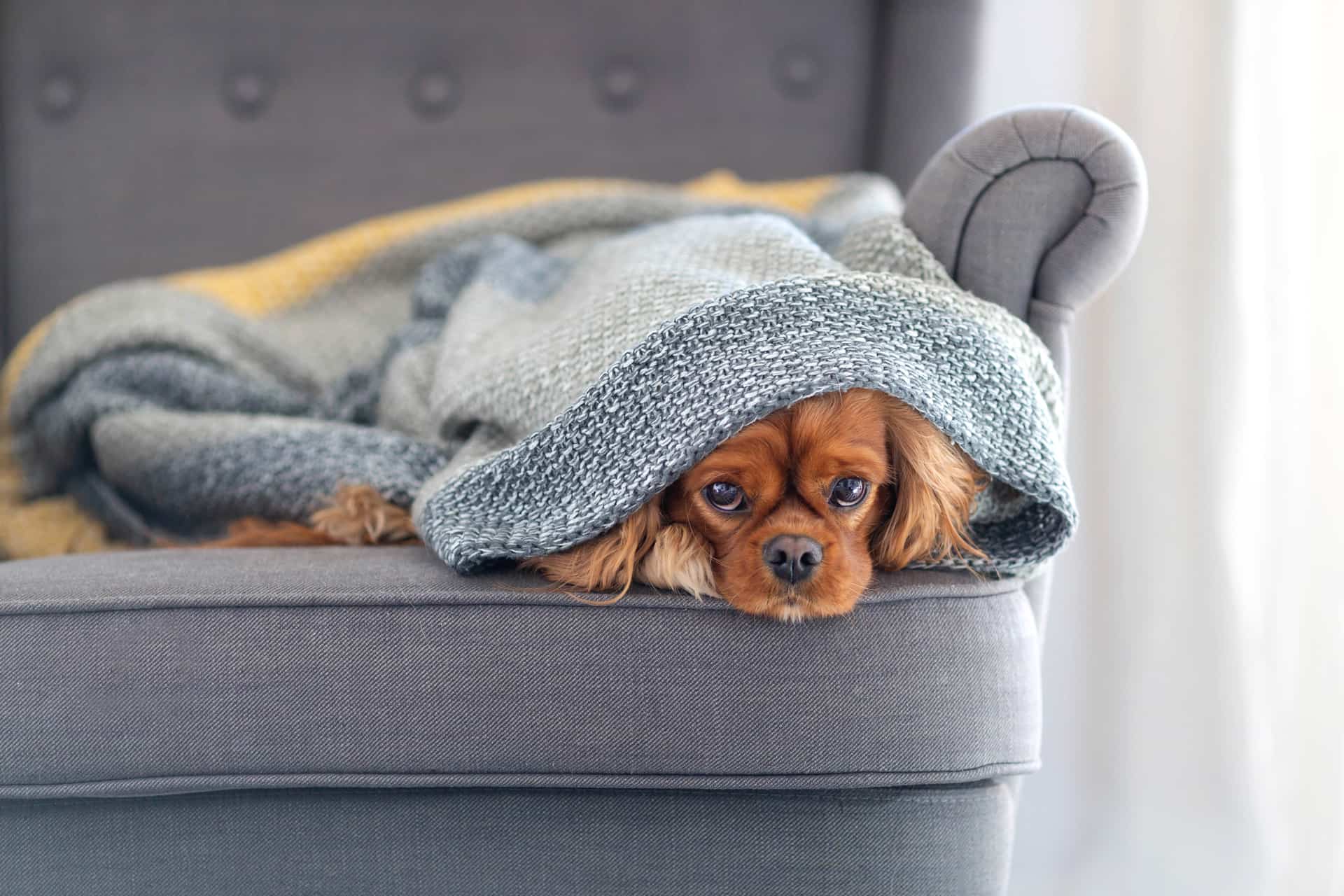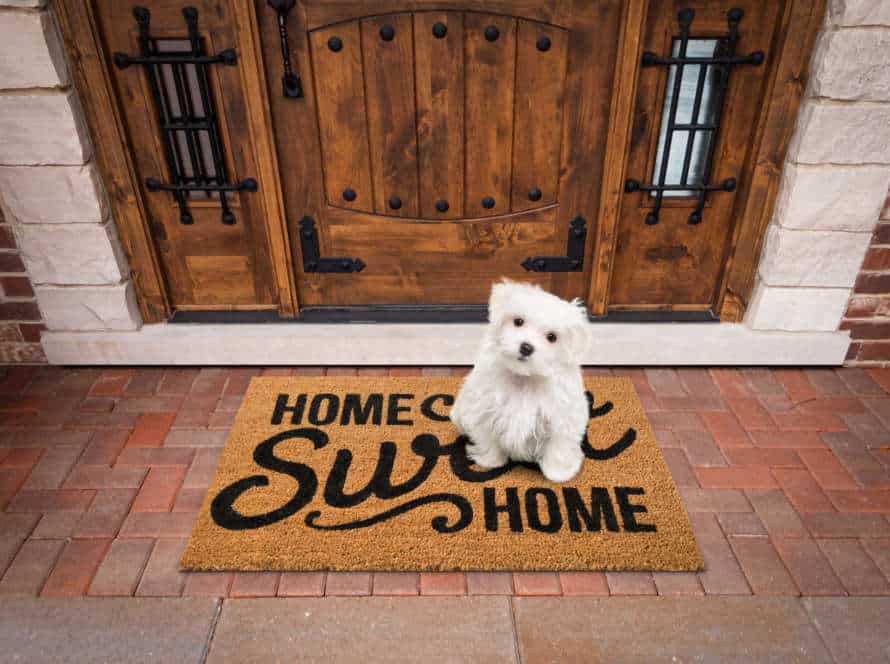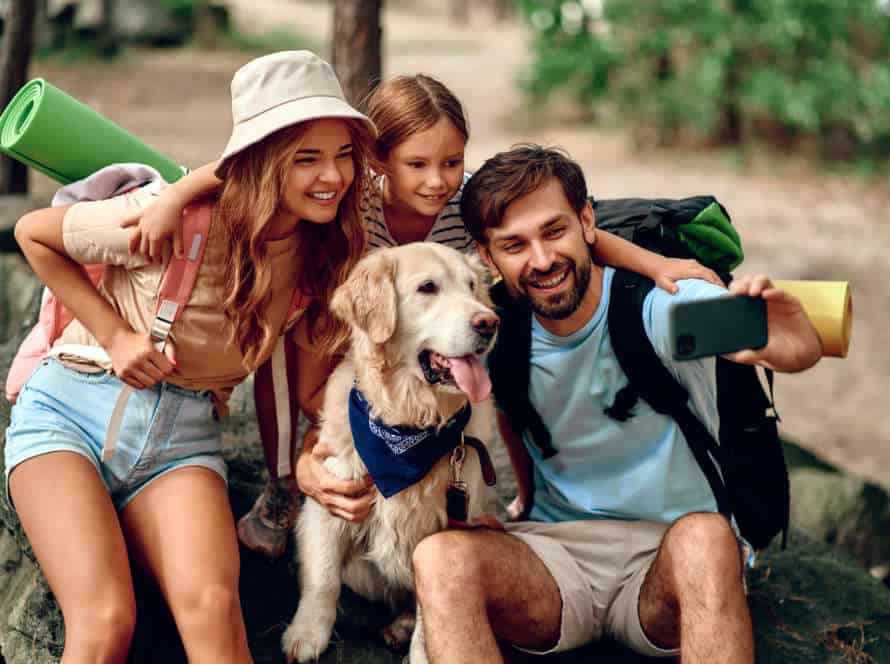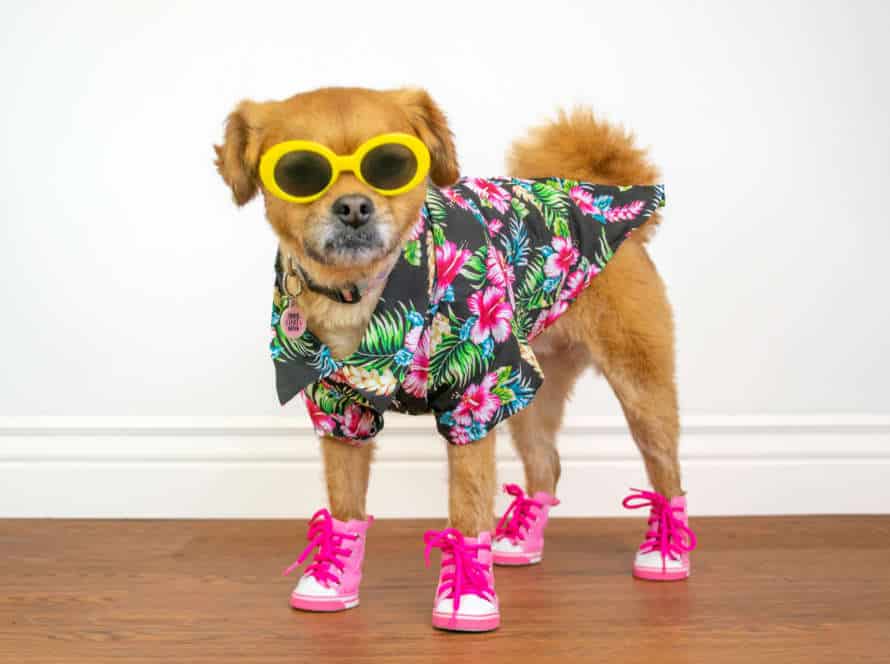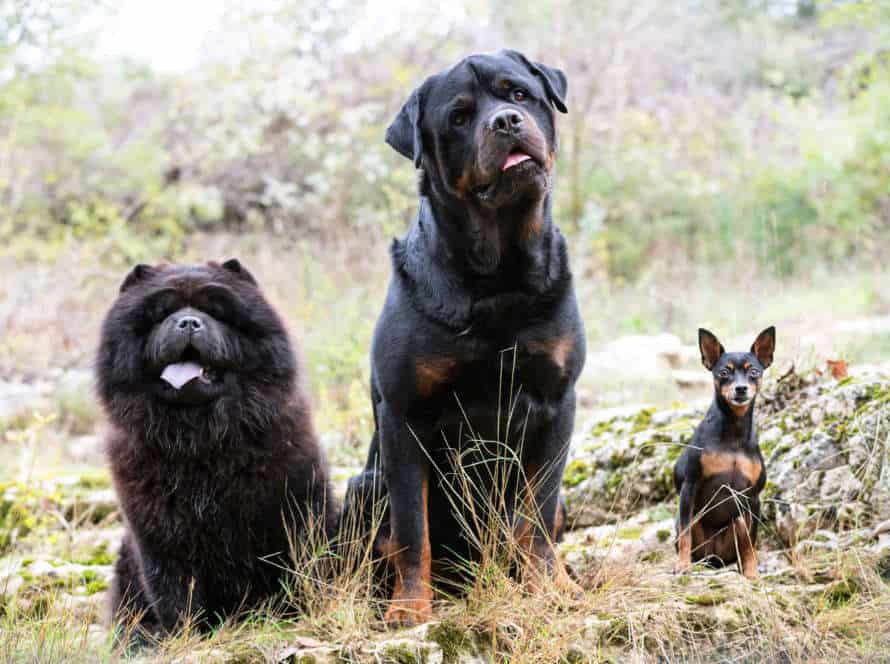Easing Noise Phobias in Dogs: A Proactive Approach
Help your pup feel secure during loud noises with a proactive approach. Here are some tips:
- Make a safe spot for them. Put calming music or white noise to mask the sound.
- Introduce your pup to loud noises gradually and give them rewards for being calm.
- Play recordings of loud noises at low volume and raise it over time.
- Ask your veterinarian for medication or natural remedies for noise anxiety.
Be proactive and ease your dog’s noise phobias – you can keep them safe and secure!
Understanding Noise Phobia in Dogs
Noise phobia, or fear of loud noises, is fairly common in dogs. If your pup shows signs of fear or anxiety due to loud noises, such as thunderstorms, fireworks, or construction work, they may have noise phobia. It’s critical to understand this condition and learn how to help them. In this article, we’ll investigate noise phobia in dogs and discover proactive methods to reduce their fears.
What causes noise phobia in dogs?
Noise phobia in dogs is common. It can be triggered by loud, sudden noises like thunder, fireworks, gunshots, and construction. But it can also be caused by more subtle events such as changes in pressure, static electricity, and ultrasonic frequencies. These lead to fear, anxiety, and stress, and can cause destructive behaviors in dogs.
It’s important for pet owners to ease noise phobias in dogs. Here are tips:
- Give your dog a safe space during noisy events, such as a soundproofed room or a crate.
- White noise or calming music can drown out loud noises.
- Anxiety-reducing clothing and pheromone diffusers can help.
- Talk to your vet about anti-anxiety medication for severe cases.
With patience and a proactive approach, you can help your dog cope with noise phobia and have a happy life.
Common symptoms of noise phobia in dogs
Noise phobia in dogs can cause a range of symptoms. Common signs include: panting, trembling, whining, hiding and destructive behavior.
- Panting? Dogs may pant more heavily and quickly when scared.
- Trembling? Shivering, shaking and trembling might be caused by noise phobia.
- Whining? Your pup may cry or whine to indicate discomfort.
- Hiding? Dogs may search for a quiet place away from noise.
- Destruction? Scratching doors or destroying furniture may be attempts to escape.
If your dog shows such symptoms during loud noises, it could be noise phobia. You can help them cope with these noises. Desensitization and behavior modification in a secure environment can help dogs conquer their anxieties.
How to distinguish between anxiety and noise phobia in dogs
Anxiety and noise phobia can be difficult to tell apart. But, knowing the differences can assist you in managing your pup’s reactions better.
Anxiety is a long-term condition that can be caused by a variety of things. On the other hand, noise phobia is an extreme reaction to a particular sound.
Dogs with anxiety may show signs like: restlessness, less appetite, and panting a lot. Whereas, those with noise phobia may hide, bark or whine excessively, or chew destructively.
To handle your canine’s noise phobia, start off by linking the sound with a treat. Gradually, increase the noise level. You can also use anxiety vests or medication to reduce the symptoms. Besides, create a peaceful environment and avoid exposing them to unnecessary sounds.
Pro Tip: If the pup’s situations worsen, get help from a vet or animal behaviorist.
Prevention and Management Techniques for Noise Phobia in Dogs
Noise phobias in dogs can be scary. It’s when they have a fear-based reaction to loud noises like storms and fireworks. But, there are proactive strategies to prevent and manage noise phobias. This section will cover different prevention and management methods to help with a dog’s noise phobias.
Desensitization and Counterconditioning techniques
Desensitization and counterconditioning are two techniques that help with noise phobia in dogs.
Desensitization is about gradually exposing your dog to the sound they fear. Start with low volume and gradually increase it. This may help with fear of thunderstorms and fireworks.
Counterconditioning is about changing your pup’s emotional response to the sound. Associate it with something positive, like treats or playtime.
Both techniques require patience, consistency and working with your pup over time. A professional trainer or behaviourist can help create a plan for your pup’s needs.
Introduction to systematic desensitization
Systematic desensitization is a technique to help dogs with noise phobia. It involves exposing the dog to the sound at low intensity while providing positive reinforcement. This can be treats, toys, or attention. The intensity of the sound is then increased gradually, helping the dog stay relaxed. This technique helps dogs become less sensitive over time and manage their fear better. It’s a proactive approach which can even prevent noise phobia in dogs.
How to implement and carry out desensitization training
Desensitization training is a great way to help dogs with noise phobias. Here’s how to do it at home:
- Figure out the triggers: Find out which noises make your dog anxious, like thunder or firecrackers.
- Start with low volumes: Begin by playing a recording of faint thunder to your pup.
- Reward calmness: When they hear the noise, give them treats, say nice words, or give them a toy if they’re relaxed.
- Increase intensity gradually: Over time, increase the volume, and still reward them for staying chill.
- Be consistent and patient: Training takes time, so stay consistent and don’t push them too hard.
If you follow these steps, desensitization training can help your pup stay calm in noisy situations.
Medication Options for Noise Phobia
Noise phobia in dogs can cause stress, anxiety, and disruptive behavior. To ease these symptoms, several medications exist. Common medication options include:
- Benzodiazepines. These drugs reduce anxiety and help calm dogs during a stressful event. However, they can cause drowsiness, so caution is advised.
- Antidepressants. These meds treat long-term anxiety problems due to noise phobia. They take longer to work, but can be very effective.
- Sedatives. These drugs make dogs drowsy during a stressful event. But, they can cause respiratory issues, so a vet’s guidance is needed.
It’s important to remember that medication shouldn’t be the only solution. Prevention and management techniques, such as desensitization and counterconditioning, should be used in addition to medication for best results.
Anti-Anxiety Medication for Dogs
Anti-anxiety meds for dogs can be helpful in managing noise phobia. This is a common condition that can cause fear and anxiety when loud events happen, like thunderstorms, fireworks, and construction.
However, there are also ways to prevent and manage it. For example:
- Create a cozy bed in a quiet and dark room.
- Try pheromone diffusers or calming music to soothe your dog.
- Train your dog to get used to different sounds.
By combining these tactics with medication, you can give your pet the best care during hard times.
Natural Remedies for Noise Phobia in Dogs
Noise phobia is a common problem for many dogs. They become distressed when they hear loud noises like thunder, fireworks, and traffic. While there are drug treatments available, natural remedies are a cost-effective way to reduce anxiety. Here are two to try:
- Pressure Wraps: Thundershirts are pressure wraps that apply gentle, constant pressure to your dog’s body. This has a calming effect on the nervous system. These wraps can be worn for some time and are good for dogs during storms and fireworks.
- Essential Oils: Lavender oil or chamomile oil can help reduce anxiety. Rub a few drops on the neck or chest or add to bathwater. But remember to dilute it with a carrier oil, such as coconut oil, before applying it to your dog’s skin.
If these remedies do not work or if the anxiety is severe, seek professional help.
Protective Listening Devices for Dogs
If your pup is sensitive to loud noises, there are products to help! Earmuffs can muffle sounds, while still allowing everyday sounds to be heard. They come in multiple sizes to fit all dogs. Noise-cancellation earbuds are another option. These totally block out loud noises. Connect them to your dog’s collar or a separate device that plays calming music.
Introduce these devices gradually and positively. Give treats and positive reinforcement to make sure your pup doesn’t have a negative association. Training and management techniques such as desensitization and counter-conditioning can also be beneficial for managing noise phobias.
How Do Protective Listening Devices Work and They Really Effective?
Noise-cancelling headphones or ear muffs, otherwise known as protective listening devices, use advanced tech to mask loud noises that may cause fear in dogs. The devices have microphones which detect incoming sound and make a wave to counteract the noise before it reaches the pup’s ears.
Though these gadgets can help reduce the effects of loud noises, they work best when combined with other prevention and management methods for noise phobias in dogs. These techniques are desensitization training, behavioral modification and using natural or pharmaceutical calming aids.
It is vital for dog owners to take a proactive approach to relieve their pup’s noise phobias and give them a safe, quiet environment during loud events. For extra help, consult with a vet or certified dog trainer to find the best prevention and management techniques for your pup’s noise phobia.
Types of protective listening devices for dogs
Two types of protective listening devices can help manage and prevent noise phobia in dogs: earmuffs and earplugs.
Earmuffs cover the ears completely, reducing the intensity of loud noises. They are best for dogs with severe noise phobia.
Earplugs get inserted into the ears, reducing loud noises. They work well for dogs who are less sensitive to noise or have mild to moderate noise phobia.
It’s important to get the right size and type of device for your dog. Consult with a veterinarian before using any listening device, especially if your dog has any underlying health conditions.
Training for Dogs with Noise Phobia
Noise phobias in dogs can be really tough to deal with. Both dogs and owners often have a hard time with fear, worry, and stress due to loud sounds. But, by taking the best approach, dogs with noise phobias can learn to manage it. Knowing the correct techniques and strategies is essential to helping soothe your pup’s anxiety. Let’s take a look at how to help your pup feel better when hearing loud noises.
Introduction to training for dogs with noise phobia
Many canines have noise phobia, which is a huge fear of loud noises such as fireworks, thunderstorms, and vacuums. Training your pup to face their fear can be a great way to reduce their stress. Here are some tips to help:
- Desensitization & Counter-Conditioning: Expose your dog slowly to the sound they are scared of and reward them for staying calm.
- Relaxation & Positive Reinforcement: Get them used to the noise in a relaxing environment or make it a fun experience.
- Thundershirts: Wrap them up in a tight shirt to provide comfort during a loud event.
Pro tip: Talk to an animal behaviorist to get a training plan specifically for your dog’s noise phobia. It might be tricky!
How to train your dog with noise phobia to be more comfortable
Dogs with noise phobia can be helped. Here are some helpful tips:
- Gradual Exposure – Start slowly. Introduce your pup to low-level sounds. Reward them with treats if they stay calm. Increase sound intensity over time.
- Distraction Techniques – During thunderstorms or fireworks, distract them with games, treats, or a calming voice.
- Reward Calm Behavior – Give treats or toys when your dog is exposed to unfamiliar sounds.
- Consult a Vet – Talk to a vet about medications or supplements to reduce anxiety.
By following these techniques, your dog can overcome their noise phobia and be more comfortable with loud and sudden sounds. This will lead to a happier and healthier life!
Common mistakes to avoid when training a dog with noise phobia
Training a dog with noise phobia can be hard. But, you can make it easier by avoiding some common mistakes.
- Don’t punish your dog. Reward them for good behavior and positive responses instead.
- Socialize your pup. Introducing them to loud sounds in a safe environment will desensitize them over time.
- Avoid overstimulating your dog. Excessive sound exposure or aggressive techniques can worsen their phobia. Take a gentle approach to training.
By avoiding these mistakes, you can create a positive and proactive approach to easing noise phobias in dogs.
Frequently Asked Questions
1. What causes noise phobias in dogs?
Noise phobias in dogs can be caused by a wide range of factors, including genetics, early socialization experiences, traumatic events, and a lack of exposure to certain sounds during their critical period of development.
2. What are the common signs of noise phobias in dogs?
Common signs of noise phobias in dogs include trembling or shivering, panting, drooling, hiding or seeking out a safe place, barking or whining, destructiveness, and even self-injury.
3. How can I prevent noise phobias in my dog?
You can prevent noise phobias in your dog by providing them with a positive and supportive environment, socializing them properly during their critical period of development, and gradually exposing them to different sounds and noises. Consultation with a professional trainer or behaviorist may also be helpful.
4. How can I ease my dog’s noise phobias?
Some ways to ease your dog’s noise phobias include providing them with a comfortable and safe place to retreat to, using calming aids such as pheromone sprays or calming supplements, distracting them with games or treats, and gradually desensitizing them to the sound that triggers their phobia.
5. Can medication be used to treat noise phobias in dogs?
Yes, medication can be used to treat noise phobias in dogs. Anti-anxiety medications such as Benzodiazepines, Tricyclic Antidepressants, and Selective Serotonin Reuptake Inhibitors (SSRIs) may be prescribed by a veterinarian to help reduce anxiety and fear in dogs.
6. Is it possible to completely cure a dog’s noise phobia?
While it may not be possible to completely cure a dog’s noise phobia, it is possible to manage and reduce their fear and anxiety through a combination of behavior modification techniques, medication, and a supportive environment.

